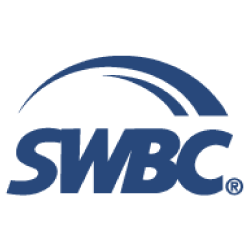Creating a Document Retention and Shredding Policy for Your Business
Inadequate document management policies can lead to devastating consequences. For instance, data breaches can cost companies an average of $4.45 million per incident, according to the 2024 Cost of Data Breach Study by IBM and the Ponemon Institute.
However, data security is more than just an IT concern. It’s a legal and operational imperative, as well. How you manage, store, and dispose of sensitive documents can directly impact your compliance, customer trust, and overall risk exposure, regardless of whether you operate a small firm or a multinational enterprise.
A well-structured document retention and shredding policy is essential to safeguard your business from not only data breaches but also regulatory penalties and operational inefficiencies. It also serves as the backbone of your information governance strategy. It determines not only what documents you keep and for how long, but also how you securely eliminate sensitive information when it’s no longer needed.
Below is a practical guide to help you create a policy that protects your business, ensures regulatory compliance, and strengthens your overall corporate data security posture.
Foundation: Document Classification and Risk Assessment
Conduct a comprehensive audit of your information landscape before establishing retention schedules. Effective classification begins with understanding both the content and context of your documents. Then categorize them according to risk, as follows:
High-Risk Categories
This typically includes financial records, personally identifiable information (PII), intellectual property, legal documents, and regulated industry-specific materials. These documents require extended retention periods and maximum security protocols during disposal.
Medium-Risk Categories
This encompasses internal communications, vendor agreements, employee records, and operational documentation. While still sensitive, these materials often have shorter retention requirements and may allow for standard secure disposal methods.
Low-Risk Categories
This includes general correspondence, marketing materials, and publicly available information. However, even these documents may contain embedded sensitive data requiring careful review before disposal.
Industry-Specific Retention Requirements
Retention schedules vary dramatically across industries, and regulatory bodies impose specific requirements that carry significant penalties for non-compliance.
Financial Services
This industry faces some of the most stringent requirements. Securities and Exchange Commission (SEC) regulations mandate the retention of investment advisory records for five years, while the Financial Industry Regulatory Authority (FINRA) requires customer account records for six years after account closure. Anti-money laundering documentation must be maintained five years, and certain audit trails require indefinite retention.
Healthcare Organizations
Healthcare organizations must navigate the complex landscape created by the Health Insurance Portability and Accountability Act (HIPAA). In particular, patient records typically require a 6-year retention, but state laws may extend this to decades.
Legal Practices
Legal professionals must balance protection of attorney-client privilege with professional responsibility requirements. The best practice for client files is to retain them for seven years post-matter closure. Meanwhile, most jurisdictions require trust account records to be retained 5 years.
Manufacturing and Technology
Companies often deal with patent documentation that requires 20-year retention and environmental compliance records needing 30-year preservation.
Implementation of Secure Shredding Protocols
When a document reaches the end of its retention period, it must be disposed of securely to protect your business and its stakeholders. This is where your corporate data security strategy must go into full effect.
Best Practices for Secure Shredding
- Use a professional shredding service: Ensure they are NAID AAA certified and provide a Certificate of Destruction for each job.
- Implement scheduled shredding: Set recurring shredding dates—monthly, quarterly, or annually—to stay compliant.
- Lockable shred bins: Place these in key areas of the office to encourage secure disposal.
- Train your employees: Educate staff on how to identify and handle confidential information.
- Don’t forget digital data: Hard drives, USBs, and old mobile devices must be physically destroyed by certified professionals.
Beyond Basic Shredding
When documents reach their retention expiration, proper destruction becomes crucial for maintaining corporate data security.
Chain of Custody Documentation
This must accompany every destruction event. Professional services provide detailed certificates that list specific materials destroyed, destruction methods used, and verification that all materials were completely eliminated. These certificates become permanent audit trail components.
Witnessed Destruction
Many regulated industries require witnessed destruction for compliance purposes. This allows designated personnel to observe the destruction process and provide additional verification for highly sensitive materials.
Implementation and Training Strategies
Policy effectiveness depends entirely on consistent implementation throughout your organization. Invest heavily in comprehensive training programs to transform document management from a compliance burden to a competitive advantage.
- Executive leadership must demonstrate a visible commitment to the policy by allocating necessary resources and modeling appropriate behaviors. When leadership treat document security as a priority, employees respond accordingly.
- Department-specific training addresses unique retention requirements and destruction protocols relevant to each functional area. Marketing teams require different guidance than accounting departments, and generic training fails to address specific needs.
- Regular refresher programs reinforce policy requirements and address evolving regulatory landscapes. Annual training updates ensure employees stay current with changing requirements and emerging threats.
- Clear escalation procedures guide employees when they encounter ambiguous situations. Establishing clear decision-making hierarchies prevents well-intentioned employees from making potentially costly mistakes.
Monitoring and Compliance Verification
Effective policies require ongoing oversight and regular validation. Businesses with robust monitoring programs achieve significantly better compliance outcomes.
- Quarterly reviews should assess policy adherence, identify implementation challenges, and address emerging risks. These reviews offer opportunities for continuous improvement and stakeholder feedback.
- Annual audits conducted by qualified professionals verify that retention schedules align with current regulations, destruction procedures meet security standards, and documentation adequately supports compliance efforts.
- Vendor performance evaluation ensures your shredding service providers maintain appropriate certifications, follow prescribed procedures, and provide reliable documentation. Regular vendor audits protect against service degradation and compliance failures.
Building Long-Term Success
Your document retention policy represents a critical component of your overall risk management strategy. When properly implemented, it protects your organization from regulatory penalties, reduces operational costs, and demonstrates a commitment to excellence that distinguishes market leaders.
Proper document management transforms organizations. It creates more secure, efficient, and confident businesses. Additionally, investing in comprehensive policies pays dividends through reduced risks, lower costs, and enhanced reputation.
Your information is among your most valuable assets. Protecting it through proper retention and destruction practices isn’t just good business. It’s essential for long-term success in today’s competitive and regulated environment.

















